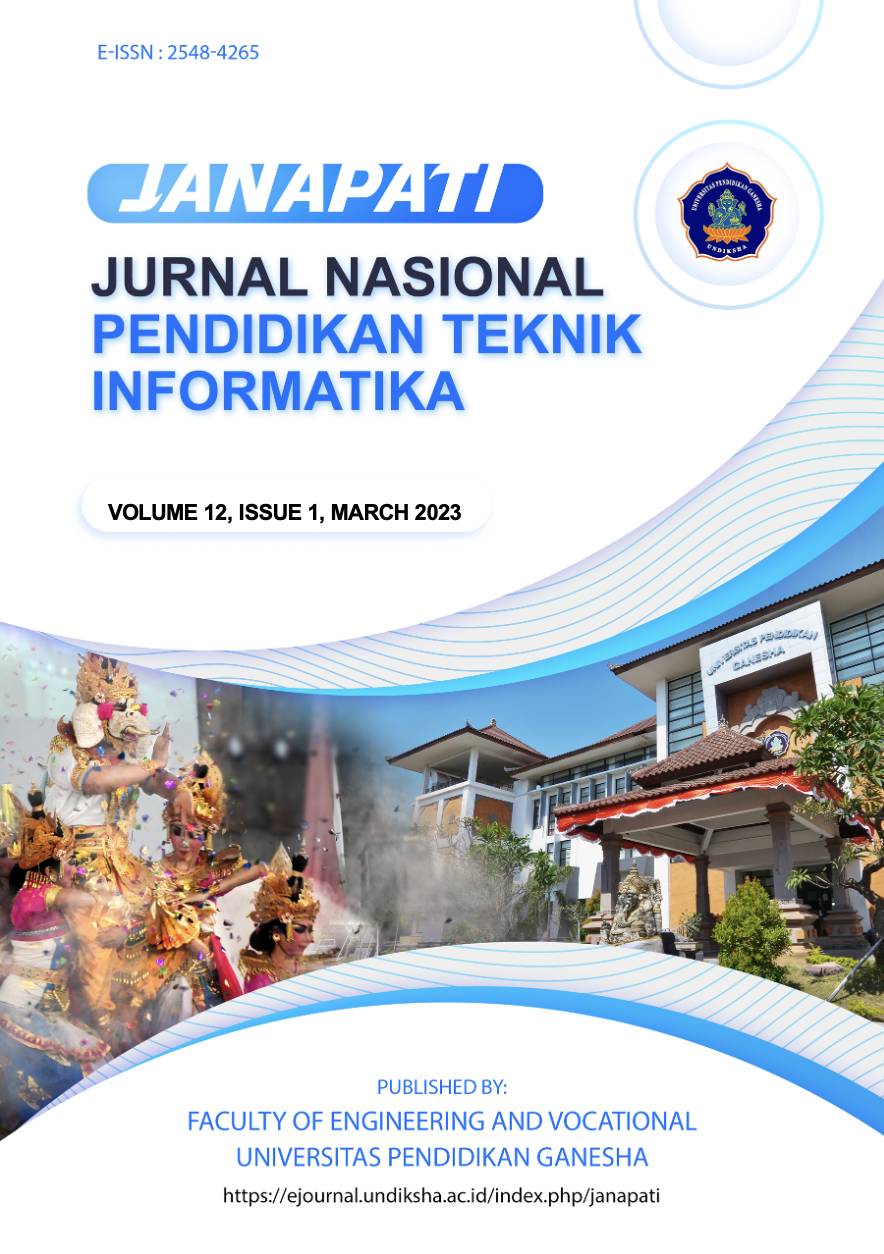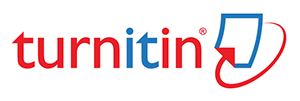Leaf Health Identification on Melon Plants Using Convolutional Neural Network
DOI:
https://doi.org/10.23887/janapati.v12i1.58492Keywords:
melon leaf health, preparation data, pre-processing data, CNNAbstract
Plants require complete nutrients to grow well and produce good-quality products. Some examples of symptoms in plants that lack nutrients such as wrinkled leaves and slow ripening of fruit, so plants are less productive. Plants that lack nutrients are unhealthy plants. This research aims to identify healthy and unhealthy leaves on melon plants so that immediate action can be taken to deal with them. This research will be useful for melon farmers everywhere. The dataset used is data taken directly using a digital camera with the help of melon farmers to label each data, both healthy and unhealthy leaves. This research has two main works, they are the training process and the testing process. The proposed research uses the Convolutional Neural Network (CNN) method with 10 epochs. The test results on the 20-test data achieve 100% accuracy. We used accuracy, precision, recall, and f1-score to evaluate the classification method.
References
I Ketut Sunadra, Ni Luh K. S. Mudra, Anak A.N.M. Wirajaya, Made S. Yuliartini, Luh Kartini, I Gusti B. Udayana, and Ida B. K. Mahardika. Response to Growth and Yield Melon Plant (Cucumis Melo L.) in the Giving of Rabbit Urine and KNO3. SEAS (Sustainable Environment Agricultural Science). 2019; Vol. 3 No.2: pp. 106-112. E-ISSN 2614-0934. http://dx.doi.org/10.22225/seas.3.2.1490.107-112.
Sobir and Siregar, F. D., Berkebun Melon Unggul. Penebar Swadaya-Jakarta Timur. 2014.
B. Vijaya. Leaf Recognition and Matching with Matlab. Thesis. Faculty of San Diego State University; 2014.
R. A. Asmara, M. Mentari, N. S. Herawati Putri and A. Nur Handayani. Identification of Toga Plants Based on Leaf Image Using the Invariant Moment and Edge Detection Features. 2020 4th International Conference on Vocational Education and Training (ICOVET), 2020, pp. 75-80, doi: 10.1109/ICOVET50258.2020.9230343.
I. Ariawan, Y. Herdiyeni and I. Z. Siregar. Geometric morphometric analysis of leaf venation in four shorea species for identification using digital image processing. Biodiversitas, vol. 21, no. 7, pp. 3303-3309, 2020, doi: 10.13057/biodiv/d210754.
M. Y. Braginskii and D. V. Tarakanov. Identification of plants condition using digital images. Journal of Physics: Conference Series, vol. 1353, no. 1, pp. 1-4, 2019, doi: 10.1088/1742-6596/1353/1/012108.
Y. Ampatzidis et al. Vision-based system for detecting grapevine yellow diseases using artificial intelligence. Acta Horticulturae, vol. 1279, pp. 225-230, 2020, doi: 10.17660/ActaHortic.2020.1279.33.
Harjeet Kaur, Deepak Prashar, and Vipul Kumar. Deep CNN Models In Plant Disease Identification. Advances and Applications in Mathematical Sciences, March 2022; Vol. 21 No. 5: pp. 2681-2693.
A. Taslim, S. Saon, A.K. Mahamad, M. Muladi, W.N. Hidayat, Plant leaf identification system using convolutional neural network. Bulletin of Electrical Engineering and Informatics. 2021; Vol. 10 No. 6: pp. 3341-3352.
Konstantinos P. Ferentinos. Deep learning models for plant disease detection and diagnosis. Elsevier. Computers and Electronics in Agriculture. 2018; Vol. 145: pp. 311-318.
Bulent Tugrul, Elhoucine Elfatimi, and Recep Eryigit. Convolutional Neural Networks in Detection of Plant Leaf Diseases: A Review. Agriculture. 2022; Vol. 12 No. 8:1192.
André S. Abade, Paulo Afonso Ferreira and Flávio de Barros Vidal. Plant Diseases Recognition On Images Using Convolutional Neural Networks: A Systematic Review. September 2020.
I. Goodfellow, Y. Bengio, and A. Courville, Deep Learning. Cambridge, Massachusetts: The MIT Press, 2016.
What are Convolutional Neural Network?. Jan 6, 2021. https://www.ibm.com/cloud/learn/convolutional-neural-networks (accessed Mei 2021).
A. A. Kasim, R. Wardoyo, and A. Harjoko, “Batik classification with artificial neural network based on texture-shape feature of main ornament”, International Journal of Intelligent Systems and Applications, Vol. 9, No. 6, pp. 55-65, 2017.
Classification: Accuracy. July 2022. https://developers.google.com/machine-learning/crash-course/classification/accuracy (accessed February 2023)
Classification: True vs. False and Positive vs. Negative. https://developers.google.com/machine-learning/crash-course/classification/true-false-positive-negative (accessed February 2023)
Classification: Precision and Recall. . https://developers.google.com/machine-learning/crash-course/classification/precision-and-recall (accessed February 2023)
X. Deng, Q. Liu, Y. Deng, and S. Mahadevan. An improved method to construct basic probability assignment based on the confusion matrix for classification problem. Information Sciences, Vol. 340-341, No. May, pp. 250-261, 2016.
Downloads
Published
How to Cite
Issue
Section
License
Copyright (c) 2023 Farah Zakiyah Rahmanti, Bernadus Anggo Seno Aji, Oktavia Ayu Permata, Berliana Amelia, M. Hamim Zajuli Al Faroby

This work is licensed under a Creative Commons Attribution-ShareAlike 4.0 International License.
Authors who publish with Janapati agree to the following terms:- Authors retain copyright and grant the journal the right of first publication with the work simultaneously licensed under a Creative Commons Attribution License (CC BY-SA 4.0) that allows others to share the work with an acknowledgment of the work's authorship and initial publication in this journal
- Authors are able to enter into separate, additional contractual arrangements for the non-exclusive distribution of the journal's published version of the work (e.g., post it to an institutional repository or publish it in a book), with an acknowledgment of its initial publication in this journal.
- Authors are permitted and encouraged to post their work online (e.g., in institutional repositories or on their website) prior to and during the submission process, as it can lead to productive exchanges, as well as earlier and greater citation of published work. (See The Effect of Open Access)







